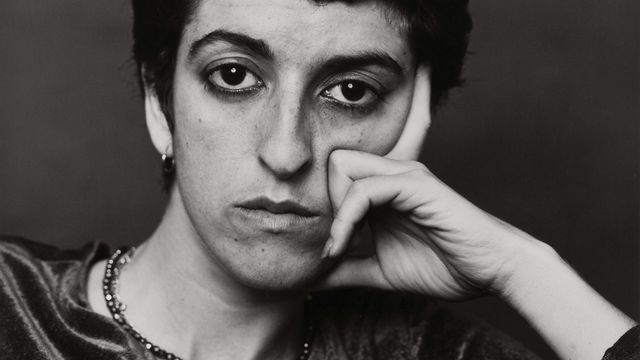
Marcia Schvartz
Born in 1955, Marcia Schvartz is an Argentine multimedia artist best known for her expressionist figurative paintings. She entered the Escuela de Bellas Artes Manuel Belgrano in Buenos Aires in 1970 but left before graduating. In the early 1970s she received informal training from Ricardo Carreira (1942–1993), Luis Felipe Noé (b. 1933), Jorge Dermijían (b. 1932), and Aída Carballo (1916–1985). Schvartz credits Carballo as one of her most important artistic influences.
On March 24, 1976, the same day as her birthday, a right-wing coup over-threw Isabel Perón, and a military junta was installed. The disappearance of young people that ensued with the rise of the right wing touched her close to home; in 1977 her best friend, Hilda Fernández, disappeared. As a member of the Peronist youth movement, a left-leaning wing of the Peronist party that was politically committed to the struggles of the working class, Schvartz decided to self-exile to Barcelona in 1979. The loss of those disappeared by the junta, combined with the death of her friend the artist Liliana Maresca (1951–1994) some years later due to complications related to AIDS, would become sources of inspiration for Schvartz. She would also focus her attention on portraying women who were marginal to what the canon of beauty dictated and on representing sexual acts from the perspective of the female gaze.
Returning to Argentina in 1983, she turned her attention to painting scenes and portraits of those from the disenfranchised neighborhoods of Buenos Aires. The populist politics she practiced in her youth became especially vivid in her work after the 1980s. She has also collaborated with underground theater groups by designing wardrobes, stage settings, and props.
Even though she has remained outside the commercial art market, Schvartz has nonetheless received attention and accolades at the national level. In 1992 she received the Primer Premio in the 37th Salón Municipal de Artes Plásticas Manuel Belgrano; in 1996 she was awarded the Primer Premio at the Salón Hugo Del Carril, Museo de Arte Moderno de Buenos Aires; and in 2015 she won the Gran Premio de Honor from the Banco Central de la República Argentina, Buenos Aires. Her work is included in public collections abroad and in Argentina, in the Museo Nacional de Bellas Artes in Buenos Aires, Museo Municipal de Bellas Artes Juan B. Castagnino in Rosario, and Museo Provincial de Bellas Artes Timoteo E. Navarro in Tucumán. Schvartz lives and works in Buenos Aires, where she remains committed to painting and to teaching art.
—Marcela Guerrero
Selected Solo Exhibitions
1978 Tríos y dúo, Cercle Artístic de Sant Lluc, Barcelona
1986 Galería Ruth Benzacar, Buenos Aires
1994 Marcia Schvartz: La identidad oculta; Exposición retrospectiva, 1976–1994, Museo de Arte Hispanoamericano Isaac Fernández Blanco, Buenos Aires
2006 Marcia Schvartz: Joven pintora, 1975–1984, Museo de Artes Plásticas Eduardo Sívori, Buenos Aires
2013 Zoolatrías y entidades extrañas, Pabellón de Bellas Artes de la Universidad Católica de Argentina, Buenos Aires
Selected Bibliography
Abalo, Facundo. "Resistencia marciana." Maíz, no. 1 (November 2012): 38–42.
Carrascal, María Laura. "La naturaleza de Marcia Schvartz." La trama de la comunicación 12 (2007): 115–29.
Levinas, Gabriel, and Laura Malosetti Costa. Marcia Schvartz: Joven pintora, 1975–1984. Buenos Aires: Artemúltiple, 2006.
Marcia Schvartz. Buenos Aires: Centro Cultural Recoleta, 1997.
Marcia Schvartz. Buenos Aires: Museo Nacional de Bellas Artes, 1999.


